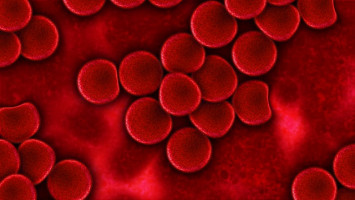
New research in the January 2022 issue of JNCCN—Journal of the National Comprehensive Cancer Network examined the impact of septic shock on people with hematologic malignancies, finding 67.8% died in fewer than 28 days and only 19.4% remained alive after 90 days.
The researchers studied 459 adult hematologic cancer patients hospitalised for septic shock between April 1, 2016 and March 31, 2019. Survival was calculated from the date of ICU admission until the patient’s date of death or date of last follow-up.
The study demonstrates a significantly higher risk for this patient group compared to patients without cancer, for whom sepsis mortality rates have been falling over the past 20 years.
“Our results highlight the opportunity for increasing awareness of the lethality of septic shock among cancer patients and how important it is to prevent it,” said senior researcher Joseph L. Nates, MD, MBA, CMQ, MCCM, Department of Critical Care, The University of Texas MD Anderson Cancer Center.
“We must develop preventive strategies to reduce infection rates in patients with blood cancers and promote early detection of sepsis before it progresses to septic shock.
We should also emphasize the early initiation of antibiotic therapy, appropriate monitoring techniques, and rational fluid resuscitation in such cancer patients with suspected infections.”
According to the findings, acute respiratory failure, elevated blood lactate, and multi-organ failure increased the probability of dying. Having received an aminoglycoside antibiotic or treatment with a white blood cell colony stimulator factor improved the odds of surviving the septic shock episode.
Patients who had an allogeneic stem cell transplant and subsequent graft-versus-host-disease had the lowest 90-day survival rate of only 4%.
“This study highlights the fact that despite advances in identification and treatment of patients with sepsis, the outcome remains very poor for patients with hematologic malignancies,” commented Sankar Swaminathan, MD, Don Merrill Rees Presidential Endowed Chair Chief of Infectious Diseases, Department of Medicine, Huntsman Cancer Center-University of Utah Health, who was not involved with this research.
“The extremely high mortality of such patients admitted with septic shock is sobering and underscores the need for improved strategies to identify these patients early in the disease course. While the NCCN Guidelines for Prevention and Treatment of Cancer-Related Infections utilize risk stratification to guide management, further research in this area is clearly needed.”
Dr. Swaminathan, who is Vice-Chair of the NCCN Clinical Practice Guidelines in Oncology (NCCN Guidelines®) Panel for Prevention and Treatment of Cancer-Related Infections continued: “The study also identifies aspects of treatment that may be important in improving outcomes in septic shock in this population, such as earlier use of antibiotics, cytokines, and ICU admission.
I look forward to further research in this area that facilitates identification and targeted treatment of patients with hematologic malignancies at risk for septic shock.”
Source: JNCCN—Journal of the National Comprehensive Cancer Network
The World Cancer Declaration recognises that to make major reductions in premature deaths, innovative education and training opportunities for healthcare workers in all disciplines of cancer control need to improve significantly.
ecancer plays a critical part in improving access to education for medical professionals.
Every day we help doctors, nurses, patients and their advocates to further their knowledge and improve the quality of care. Please make a donation to support our ongoing work.
Thank you for your support.